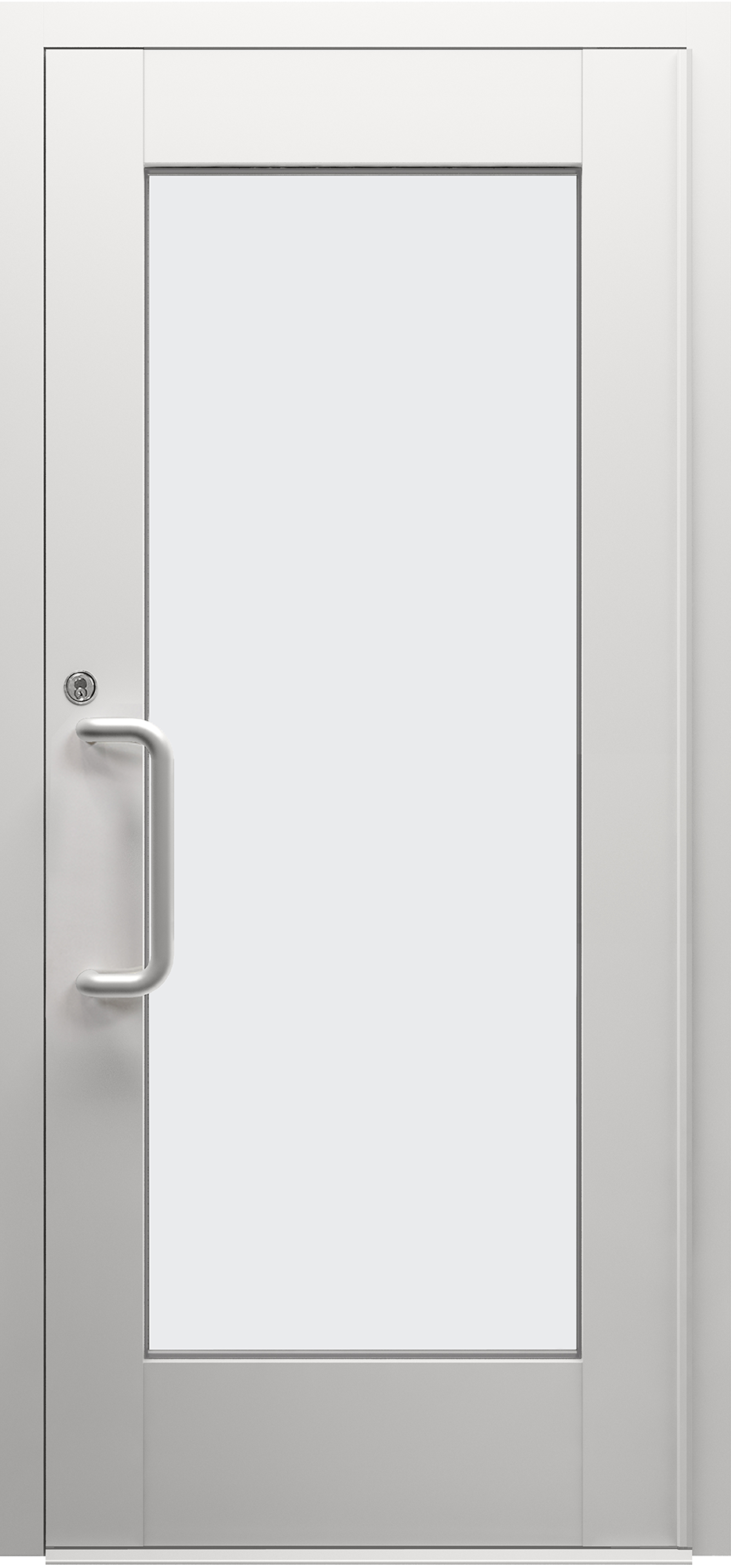The most common cause for door malfunctioning is improper installation. The door frames must be plumb and square. Misalignment is easily detected by observing if the locks function freely without hanging up or causing friction binds.
Another point to look for is inconsistency of the closure gap. If the gap is wider at the top than the bottom, the unit is misaligned. However, if the door and locks function freely then no further adjustment is recommended. With the door closer disconnected and the door opened at a 45- degree angle, the leaf should remain in one place. If the door drifts open or closed, then the frame is not level (vertical alignment).
The best way to re-adjust the door frame for lock adjustment is to remove the door stops, thus exposing the mounting bolts. Loosen the bolts and physically move or change the shims to be located between the wall and the outside edge of the frame. Removing shims for one side or adding to the other side will bring the frame in closer or spread further apart. Retighten all bolts upon completion. Re-install the door stops. If the frame is not vertical, then it is recommended that the mounting bolts be removed one at a time and the hole elongated in the direction that the door must be moved. If the door leaf is dragging, then elongate the mounting holes vertically. Gently pry the door frame up until sufficient clearance is obtained. Retighten all bolts upon completion.
The hinges should be checked periodically to ensure that all the screws are tight. Loosening the hinge screws, repositioning the door, and retightening the screws may accomplish some minor adjustment. Another cause for door misalignment (assuming the installation was correct) is settlement of the building and/or the wall not being capable of sustaining the weight and constant movement of the door.
Warranty: All necessary replacement of parts and adjustments not occasioned by accident or misuse shall be made at the vendor’s expense when notified within 30 days after customer receipt of product. All products are warranted for a period of one year from the date of customer receipt. During warranty period, all defects not caused by attack, accident or misuse through fault or negligence by the customer shall be adjusted or replaced at the vendor’s expense (excluding transportation costs).
Disclaimer: In as much as U. S. Bulletproofing has no control over the use to which others may put this material, it does not guarantee that the same results, as those described herein will be obtained. Nor does USBP guarantee the effectiveness or safety of any possible or suggested design as illustrated herein by any photograph, technical drawing and the like. Each user of products or design or both should make his own tests to determine the suitability of the product or design or both for his own particular use.
 Wood finish options are now available for our windows and door systems with 14 different styles to choose from! These wood grain finishes are the perfect choice to balance high level protection with naturally designed aesthetics.
Wood finish options are now available for our windows and door systems with 14 different styles to choose from! These wood grain finishes are the perfect choice to balance high level protection with naturally designed aesthetics.























